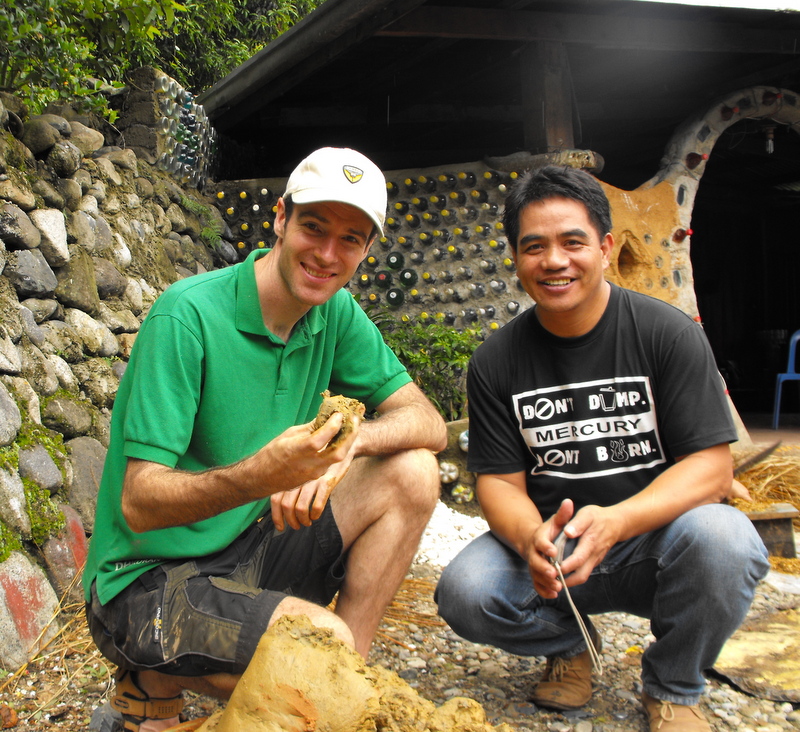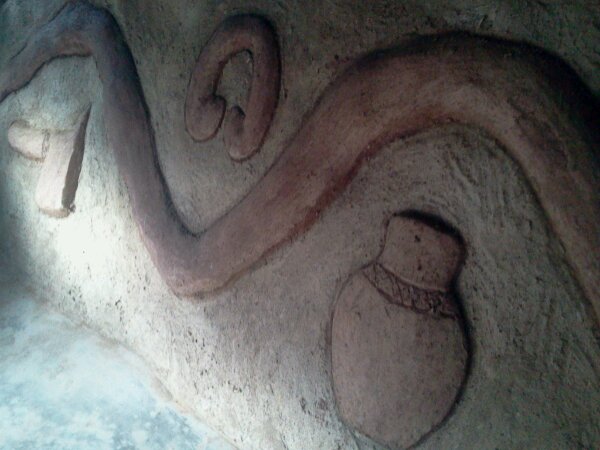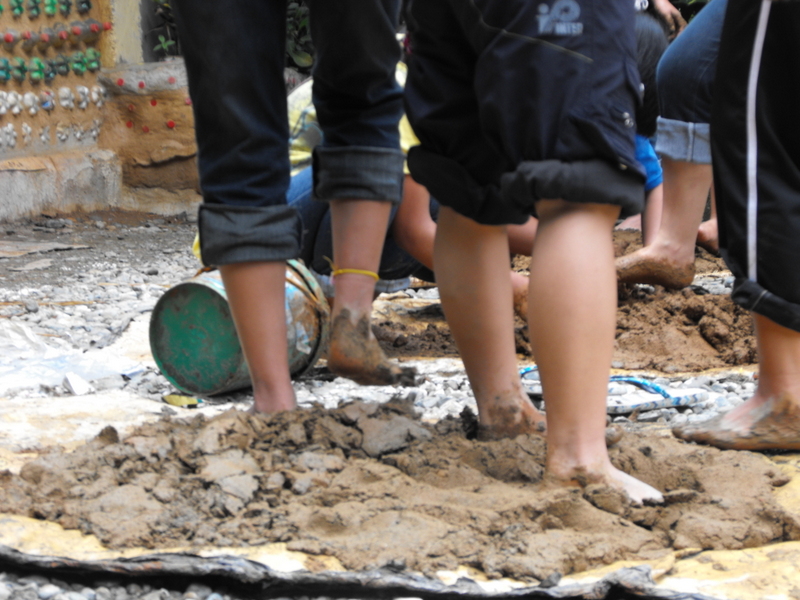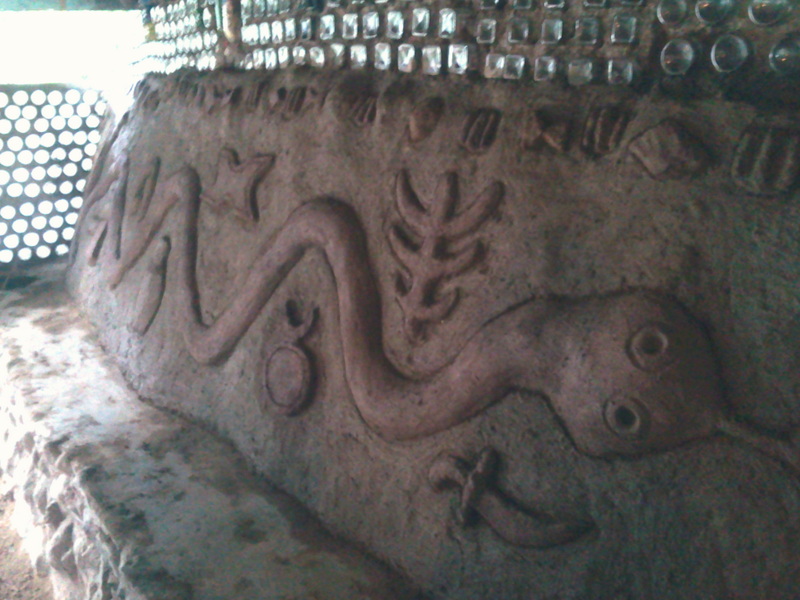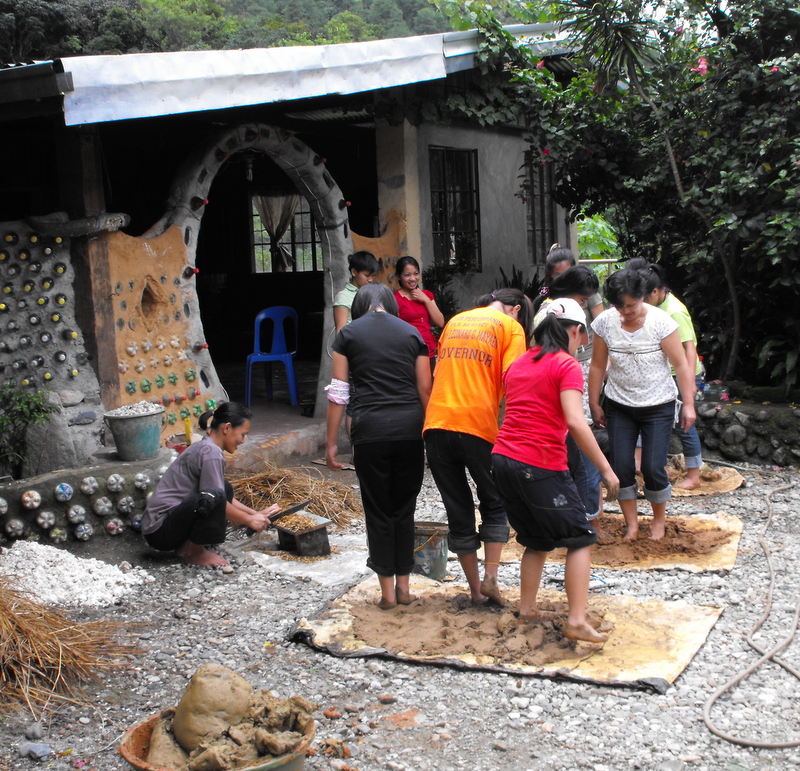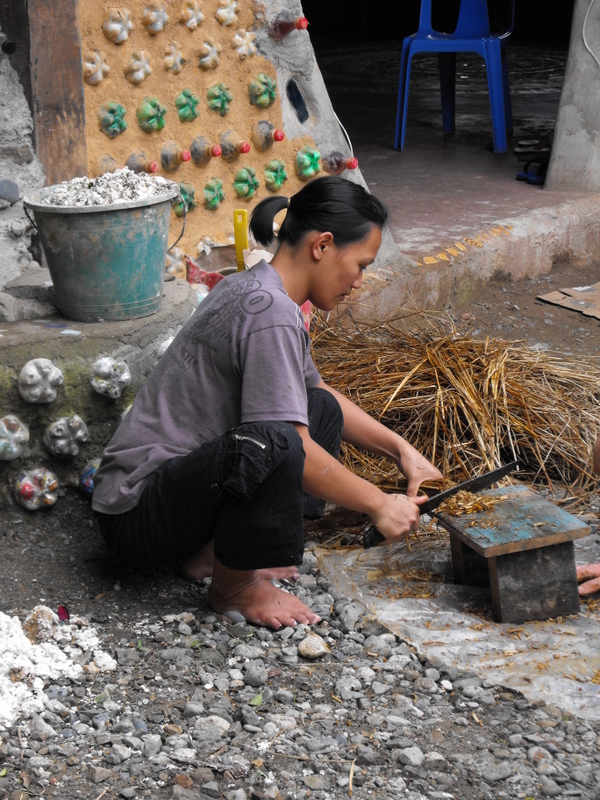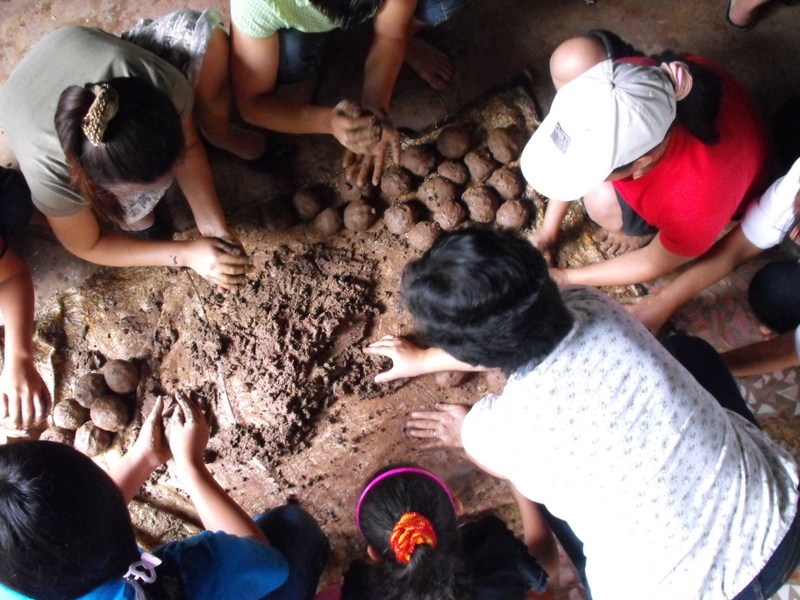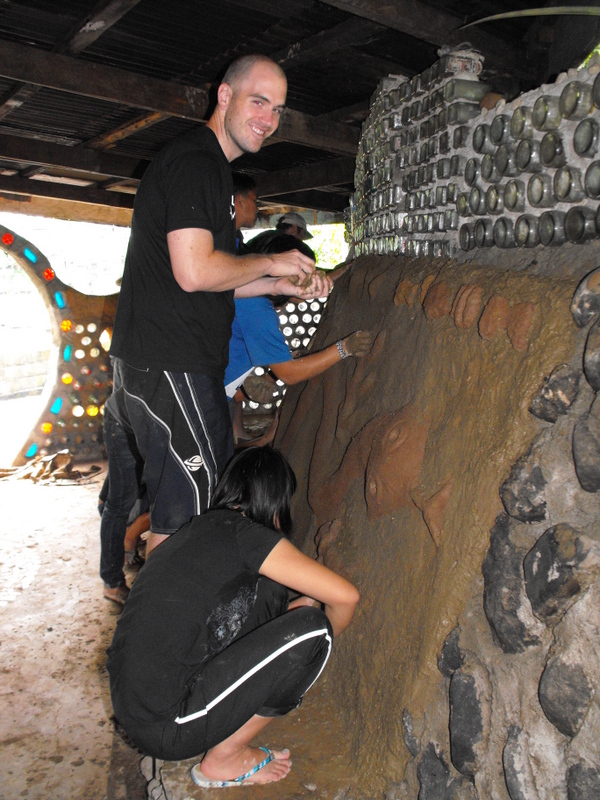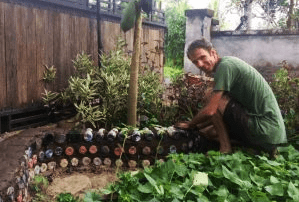Last week, we collaboratively crafted an experimental clay mural. The clay that we used had an unusual source– a local small scale goldmine that, like many others, has no use for the mud that results from its process. The experiment was both in using this ‘waste’ clay and testing our clay to sand to straw ratios. Success!
You can see the result of our work in my last post and in the close up below of the mural one and half weeks later. The clay has dried and hasn’t cracked! The two colors are clearly discernible and it has a rough organic texture to it. In one place where the water has leaked from the roof, there is no erosion. Our cob ratios are now rocking!
However, the success goes alot deeper than just a nice mural and ratio advancement.
Two weeks ago I serendipitously met up with Leonicid, from BanToxics.org in Baguio. His organization works on getting crazy toxic stuff like Mercury out of schools, mines and the environment. He has been working hard to keep toxic mercury out of the mining process and they have set up a showcase non-mercury gold processing plant. When I visited his plant I wasn’t so much excited about the gold production as I was about the mud that they had no idea what to do with. As they say, ‘One man’s trash is another’s Treasure’.
Finely sifted sediment is an inevitable, ugly and impractical by-product of small local mine processing plants. They don’t know what to do with it. It ends up clogging the nearby area. But wow! Looked at from another perspective it has amazing potential.
The dirt has been processed three times at great effort and cost by mechanical sluices to remove gold particles. The result is a superfine clay/sand mixture that is perfect for use as Ecobrick mortar! Heck, usually we have to process our local clay by letting it sit for days and blending it mechanically or manually to get the consistency that Leonicid mud already had. Leonicid delivered five bags of clay which we were able to use right away with sand, straw, iron oxide (for coloring) and a little cement power (4:16:2:1:1).
Instead of Mercury, Leonicid’s plant uses a cyanide process. The cyaniade breaks down quickly after the gold has been removed into its core elements as it is exposed to sun, air and water. I have still have some questions about this however, and the onus is on Leonicid and his team to extensively test the clay for trace Cyanantes, now that we have shown that it has fantastic building potential.
What is interesting now is that we have discovered a use for this ‘waste’ clay. ‘Waste’ is of course an entirely human concept. It is the result of linear and shortsighted thinking. Mother nature is all about circles of reuse and recycling. With this breakthrough however, there is now the window to develop the highly processed clay as a product and close this particular waste circle. Its what I like to call Trash to Treasure thinking. How, ironic the other output is gold!
With this insight, the gold processing can be adjusted to think about the next circle: the intentional target of producing practical, safe and valuable building grade clay (for instance, instead of just letting it flow into ponds, direct through stages to a location where it can be packaged into sacks).

